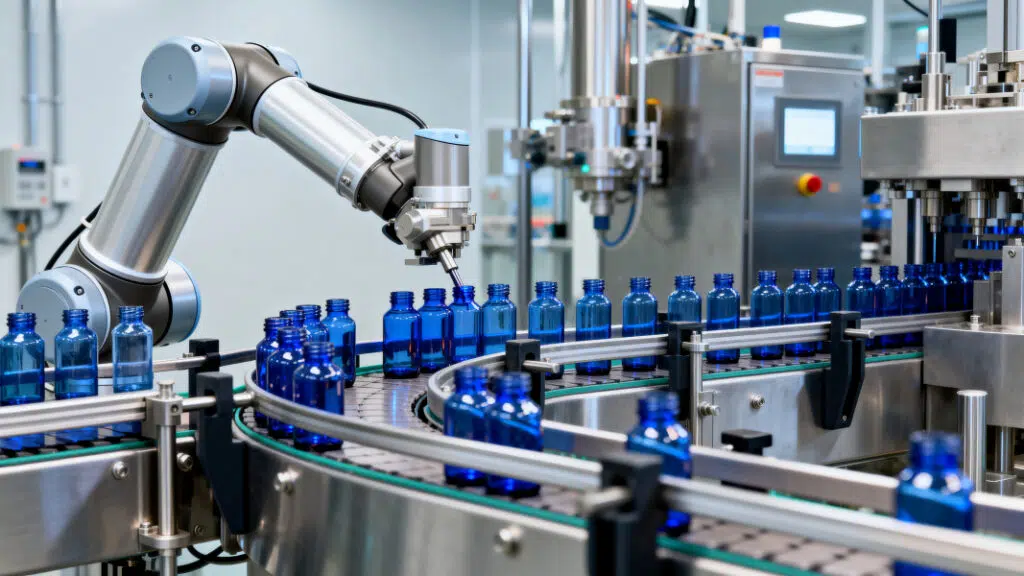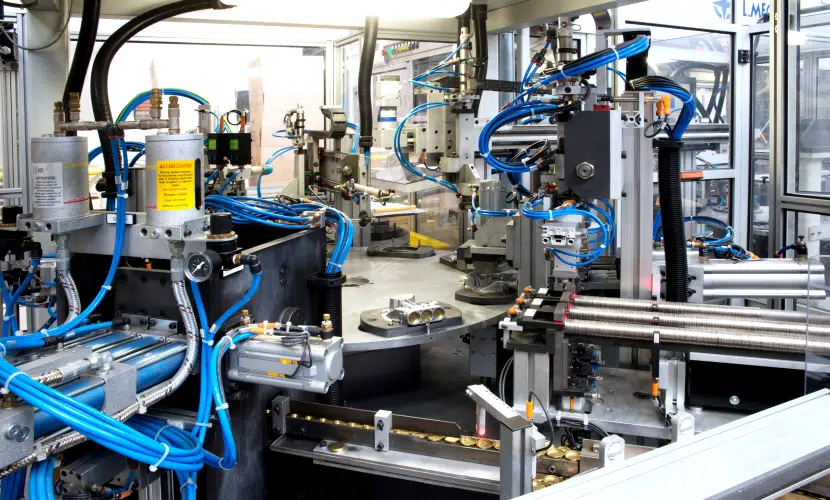production lines
Sequence of standardised workstations connected by conveyor technology
Connecting conveyor technology
The conveyor or transfer technology in production lines ensures that materials and components are transferred between stations in a synchronised or asynchronous manner. In principle, any technology can be used here, such as roller conveyors, power-and-free, EHB or AGVs, or even a combination of all of these. WinMOD-SIMLINE offers a tailor-made library of 3D elements and virtual drives for each of these conveyor systems. These can be combined with each other so that a complete virtual material flow can be simulated.
Components and materials are integrated directly as CAD imports or selected from our 3D component libraries. Virtual commissioning (VC) then makes it possible to simulate large conveyor systems with many parts in real time in order to calculate cycle times and throughput, perform line balancing (bottleneck management) or determine buffer dimensions and changeover times.


Assemble, process, test
The actual assembly, processing and testing processes take place at the stations. It is often the case that stations have their own control systems, which may come from a wide variety of manufacturers. Flexibility is therefore a crucial criterion for a VC system. With WinMOD, you can easily and efficiently connect multiple and different control systems via different bus systems to your system at the same time.
Depending on the desired simulation depth, the CAD data of the stations can be integrated to simulate manufacturing and testing processes in 3D in real time. If the focus is more on the entire plant, it makes sense to create the stations as black box units that output type Z components after a defined processing time X. This simplified behaviour can also be simulated in WinMOD-SIMLINE, in which case it is not necessary to integrate a control system.
Further factory automation solutions
Sorting and picking systems for small items such as cartons, plastic boxes or other piece goods. Transport is via classic roller conveyors, belt conveyors
as well as the typical cam roller conveyors found here,
Belt curves and accumulation roller conveyors.
This area of technology encompasses conveyor systems that transport and sort pallets and mesh boxes. The conveyor elements are large roller and chain conveyors combined with lifting, rotating and shifting tables. Magazines for empty pallets are also typical here.
These systems are usually fully automated high-bay warehouses that are operated by storage and retrieval machines and controlled by distributed automation systems. Warehouse management systems generate the orders for storage and retrieval.
Automated systems that pick up parts from A to B and place them down again with a defined orientation – typically for loading, sorting, picking or packing. Core systems are industrial robots (Delta, SCARA, 6 axes, Cartesian) or gantry axes.
Robotics plays a central role in modern manufacturing by enabling the automation of production processes and increasing efficiency and precision. Robots are used in various areas, such as welding, assembly, painting or packaging products.
Production lines combine processes, material flow and controls into a production system with guaranteed cycle times and quality. They consist of combinations of assembly, processing and testing stations. In addition, there is transfer technology, buffers and often a highly specialised automation system.
Electric Monorail Systems are used as connecting conveyor technology over long distances. The overhead trolleys run fully automatically with integrated electric drives and controls and are usually routed via a central control system.
This chain-driven overhead or floor conveyor technology is powered by continuously running power strands (chains). Transport trolleys are coupled in, transported, decoupled at stoppers and buffered via chain drivers („dogs“).
Automated self-driving vehicles as a connecting material flow solution. Driving is either completely trackless via defined tracks or markers (AGV) or via free navigation with automatic dynamic obstacle avoidance (AMR).
Engineering discipline for the development, manufacture and maintenance of machines, plants and production systems. Typical applications include machine tools, handling technology, automotive/aerospace, packaging and assembly plants.